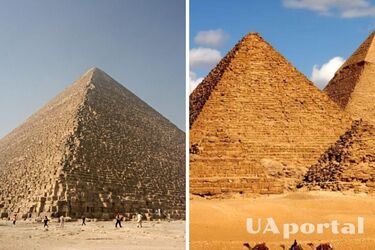Scientists reveal how many sides the Great Pyramid of Giza actually has

The Egyptian pyramids remain the object of many mysteries and discoveries. For example, few people know how many sides the Great Pyramid of Giza, the most famous of all Egyptian pyramids, actually has.
If you think the answer is four, you are wrong. Those who think it has three or five sides are also wrong – and perhaps a little confused about geometry. IFLScience writes about this,
"The correct number of sides was established only in 1926 when British Air Force pilot P. Groves took pictures of the pyramid from the air. From this angle, it became apparent that the sides of the pyramid were concave along the central axis.
"The Great Pyramid of Giza has a unique concave structure because each of its four sides is slightly recessed along the center line running from the base to the top," explains Akio Kato, a researcher at Kanagawa University. According to him, this makes the pyramid not a classic quadrangular structure, but a concave octagonal one. This feature is so subtle that it is impossible to notice from the ground, but it becomes obvious from a height.
Interestingly, these concavities, invisible from the ground, could have played an important role in the pyramid's preservation.
Experts believe that such design features helped the pyramids to withstand natural challenges for thousands of years. According to Kato, the sloping layers and reinforced base ensured the pyramid's long-term stability against factors such as earthquakes, gravitational compression, and heavy rains. It is estimated that the pyramid has survived more than 500 heavy rainstorms over the past 4,500 years.
"Sloping structures can compact over time, becoming stronger, while straight rows would collapse more quickly," Kato emphasized.
Although the engineering skills of the ancient Egyptians are impressive – their structures have survived to this day – there is reason to believe that they were not flawless. Some of the corridors and rooms inside the pyramids turned out to be unstable and were abandoned during the construction phase. Therefore, it is still unknown whether the concavity of the sides was a conscious decision to increase durability or whether it was a happy coincidence.
If you want to get the latest news about the war and events in Ukraine, subscribe to our Telegram channel!
